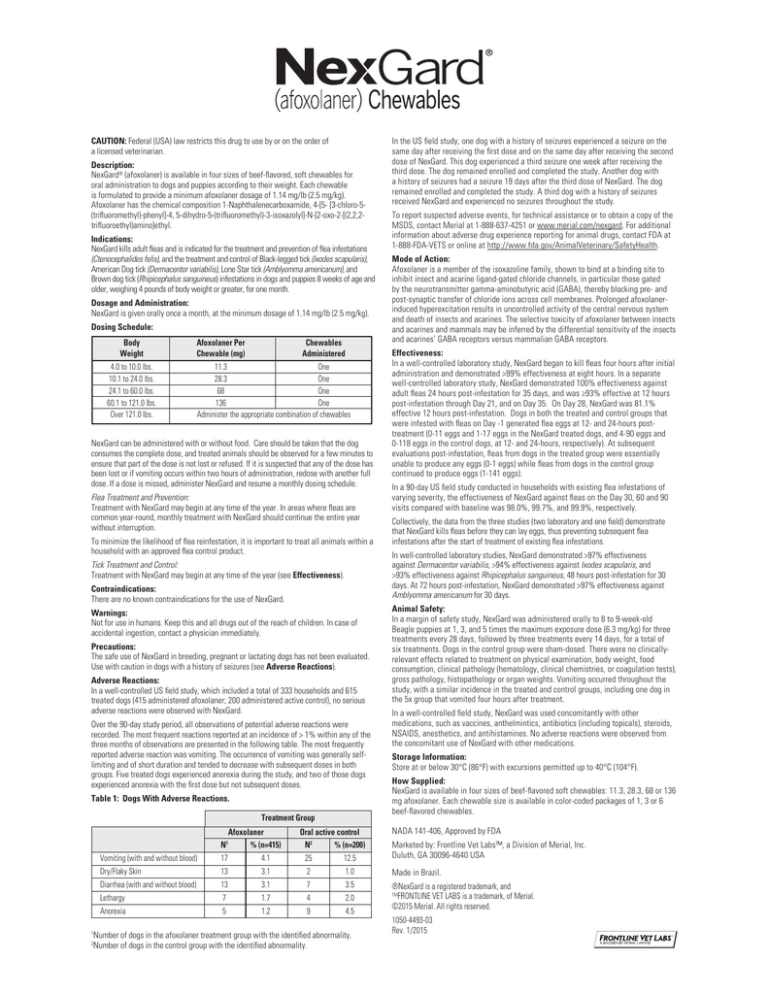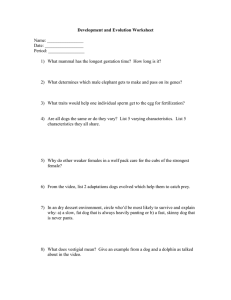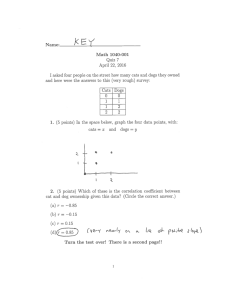
CAUTION: Federal (USA) law restricts this drug to use by or on the order of
a licensed veterinarian.
Description:
NexGard® (afoxolaner) is available in four sizes of beef-flavored, soft chewables for
oral administration to dogs and puppies according to their weight. Each chewable
is formulated to provide a minimum afoxolaner dosage of 1.14 mg/lb (2.5 mg/kg).
Afoxolaner has the chemical composition 1-Naphthalenecarboxamide, 4-[5- [3-chloro-5(trifluoromethyl)-phenyl]-4, 5-dihydro-5-(trifluoromethyl)-3-isoxazolyl]-N-[2-oxo-2-[(2,2,2trifluoroethyl)amino]ethyl.
Indications:
NexGard kills adult fleas and is indicated for the treatment and prevention of flea infestations
(Ctenocephalides felis), and the treatment and control of Black-legged tick (Ixodes scapularis),
American Dog tick (Dermacentor variabilis), Lone Star tick (Amblyomma americanum), and
Brown dog tick (Rhipicephalus sanguineus) infestations in dogs and puppies 8 weeks of age and
older, weighing 4 pounds of body weight or greater, for one month.
Dosage and Administration:
NexGard is given orally once a month, at the minimum dosage of 1.14 mg/lb (2.5 mg/kg).
Dosing Schedule:
Body
Weight
4.0 to 10.0 lbs.
10.1 to 24.0 lbs.
24.1 to 60.0 lbs.
60.1 to 121.0 lbs.
Over 121.0 lbs.
Afoxolaner Per
Chewable (mg)
Chewables
Administered
11.3
One
28.3
One
68
One
136
One
Administer the appropriate combination of chewables
NexGard can be administered with or without food. Care should be taken that the dog
consumes the complete dose, and treated animals should be observed for a few minutes to
ensure that part of the dose is not lost or refused. If it is suspected that any of the dose has
been lost or if vomiting occurs within two hours of administration, redose with another full
dose. If a dose is missed, administer NexGard and resume a monthly dosing schedule.
Flea Treatment and Prevention:
Treatment with NexGard may begin at any time of the year. In areas where fleas are
common year-round, monthly treatment with NexGard should continue the entire year
without interruption.
To minimize the likelihood of flea reinfestation, it is important to treat all animals within a
household with an approved flea control product.
Tick Treatment and Control:
Treatment with NexGard may begin at any time of the year (see Effectiveness).
Contraindications:
There are no known contraindications for the use of NexGard.
Warnings:
Not for use in humans. Keep this and all drugs out of the reach of children. In case of
accidental ingestion, contact a physician immediately.
Precautions:
The safe use of NexGard in breeding, pregnant or lactating dogs has not been evaluated.
Use with caution in dogs with a history of seizures (see Adverse Reactions).
Adverse Reactions:
In a well-controlled US field study, which included a total of 333 households and 615
treated dogs (415 administered afoxolaner; 200 administered active control), no serious
adverse reactions were observed with NexGard.
Over the 90-day study period, all observations of potential adverse reactions were
recorded. The most frequent reactions reported at an incidence of > 1% within any of the
three months of observations are presented in the following table. The most frequently
reported adverse reaction was vomiting. The occurrence of vomiting was generally selflimiting and of short duration and tended to decrease with subsequent doses in both
groups. Five treated dogs experienced anorexia during the study, and two of those dogs
experienced anorexia with the first dose but not subsequent doses.
Table 1: Dogs With Adverse Reactions.
Treatment Group
Oral active control
N2
% (n=200)
In the US field study, one dog with a history of seizures experienced a seizure on the
same day after receiving the first dose and on the same day after receiving the second
dose of NexGard. This dog experienced a third seizure one week after receiving the
third dose. The dog remained enrolled and completed the study. Another dog with
a history of seizures had a seizure 19 days after the third dose of NexGard. The dog
remained enrolled and completed the study. A third dog with a history of seizures
received NexGard and experienced no seizures throughout the study.
To report suspected adverse events, for technical assistance or to obtain a copy of the
MSDS, contact Merial at 1-888-637-4251 or www.merial.com/nexgard. For additional
information about adverse drug experience reporting for animal drugs, contact FDA at
1-888-FDA-VETS or online at http://www.fda.gov/AnimalVeterinary/SafetyHealth.
Mode of Action:
Afoxolaner is a member of the isoxazoline family, shown to bind at a binding site to
inhibit insect and acarine ligand-gated chloride channels, in particular those gated
by the neurotransmitter gamma-aminobutyric acid (GABA), thereby blocking pre- and
post-synaptic transfer of chloride ions across cell membranes. Prolonged afoxolanerinduced hyperexcitation results in uncontrolled activity of the central nervous system
and death of insects and acarines. The selective toxicity of afoxolaner between insects
and acarines and mammals may be inferred by the differential sensitivity of the insects
and acarines’ GABA receptors versus mammalian GABA receptors.
Effectiveness:
In a well-controlled laboratory study, NexGard began to kill fleas four hours after initial
administration and demonstrated >99% effectiveness at eight hours. In a separate
well-controlled laboratory study, NexGard demonstrated 100% effectiveness against
adult fleas 24 hours post-infestation for 35 days, and was ≥93% effective at 12 hours
post-infestation through Day 21, and on Day 35. On Day 28, NexGard was 81.1%
effective 12 hours post-infestation. Dogs in both the treated and control groups that
were infested with fleas on Day -1 generated flea eggs at 12- and 24-hours posttreatment (0-11 eggs and 1-17 eggs in the NexGard treated dogs, and 4-90 eggs and
0-118 eggs in the control dogs, at 12- and 24-hours, respectively). At subsequent
evaluations post-infestation, fleas from dogs in the treated group were essentially
unable to produce any eggs (0-1 eggs) while fleas from dogs in the control group
continued to produce eggs (1-141 eggs).
In a 90-day US field study conducted in households with existing flea infestations of
varying severity, the effectiveness of NexGard against fleas on the Day 30, 60 and 90
visits compared with baseline was 98.0%, 99.7%, and 99.9%, respectively.
Collectively, the data from the three studies (two laboratory and one field) demonstrate
that NexGard kills fleas before they can lay eggs, thus preventing subsequent flea
infestations after the start of treatment of existing flea infestations.
In well-controlled laboratory studies, NexGard demonstrated >97% effectiveness
against Dermacentor variabilis, >94% effectiveness against Ixodes scapularis, and
>93% effectiveness against Rhipicephalus sanguineus, 48 hours post-infestation for 30
days. At 72 hours post-infestation, NexGard demonstrated >97% effectiveness against
Amblyomma americanum for 30 days.
Animal Safety:
In a margin of safety study, NexGard was administered orally to 8 to 9-week-old
Beagle puppies at 1, 3, and 5 times the maximum exposure dose (6.3 mg/kg) for three
treatments every 28 days, followed by three treatments every 14 days, for a total of
six treatments. Dogs in the control group were sham-dosed. There were no clinicallyrelevant effects related to treatment on physical examination, body weight, food
consumption, clinical pathology (hematology, clinical chemistries, or coagulation tests),
gross pathology, histopathology or organ weights. Vomiting occurred throughout the
study, with a similar incidence in the treated and control groups, including one dog in
the 5x group that vomited four hours after treatment.
In a well-controlled field study, NexGard was used concomitantly with other
medications, such as vaccines, anthelmintics, antibiotics (including topicals), steroids,
NSAIDS, anesthetics, and antihistamines. No adverse reactions were observed from
the concomitant use of NexGard with other medications.
Storage Information:
Store at or below 30°C (86°F) with excursions permitted up to 40°C (104°F).
How Supplied:
NexGard is available in four sizes of beef-flavored soft chewables: 11.3, 28.3, 68 or 136
mg afoxolaner. Each chewable size is available in color-coded packages of 1, 3 or 6
beef-flavored chewables.
NADA 141-406, Approved by FDA
Afoxolaner
N1
% (n=415)
Vomiting (with and without blood)
17
4.1
25
12.5
Marketed by: Frontline Vet Labs™, a Division of Merial, Inc.
Duluth, GA 30096-4640 USA
Dry/Flaky Skin
13
3.1
2
1.0
Made in Brazil.
Diarrhea (with and without blood)
13
3.1
7
3.5
Lethargy
71.7 42.0
Anorexia
51.2 94.5
®NexGard is a registered trademark, and
TM
FRONTLINE VET LABS is a trademark, of Merial.
©2015 Merial. All rights reserved.
Number of dogs in the afoxolaner treatment group with the identified abnormality.
2
Number of dogs in the control group with the identified abnormality.
1
1050-4493-03
Rev. 1/2015







